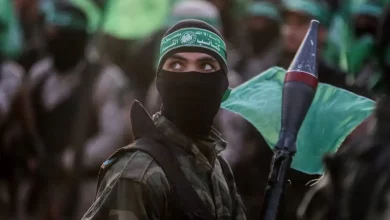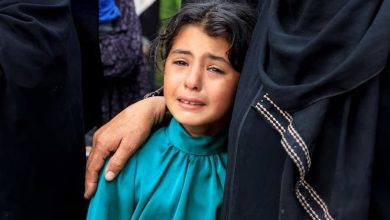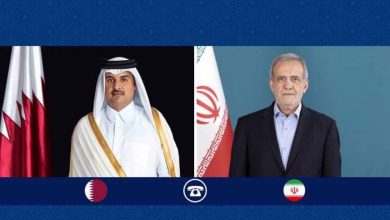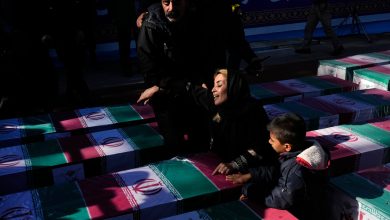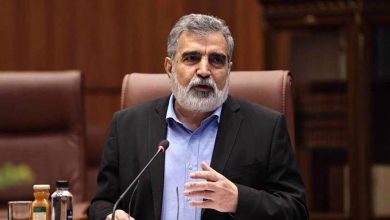Factbox: Israel’s contentious history of violating ceasefire agreements
A historic ceasefire agreement was implemented on Sunday morning, concluding a 15-month period of intense conflict between Israeli forces and Palestinians in the besieged Gaza Strip.

Concerns persist regarding Tel Aviv’s adherence to the ceasefire, as past behavior suggests a tendency to overlook agreements mandating the cessation of hostilities.
In a televised address on Saturday, just one day prior to the implementation of the eagerly awaited truce, Israeli Prime Minister Benjamin Netanyahu suggested that the accord may be of a temporary nature.
According to his statement, US President-elect Donald Trump “emphasized” that the ceasefire was “temporary” and assured that the apartheid regime would receive “full backing” from the new US administration should they choose to resume the conflict.
He also announced that former President Trump has opted to “remove all existing constraints” on U.S. munitions, enabling his administration to intensify military operations against Palestinians in Gaza with “significant force.”
His comments came in response to provocative statements made by his ministers, Itamar Ben-Gvir and Bezalel Smotrich, who strongly oppose the ceasefire agreement with the Hamas organization based in Gaza.
On Sunday, Smotrich issued a stern warning, asserting that he would seek to dismantle the Netanyahu administration should it fail to take military control of the Gaza Strip. He criticized the recent ceasefire agreement, labeling it a “grave error” and a “capitulation to Hamas.”
This development followed the announcement by Ben-Gvir regarding his party’s exit from the ruling coalition in Tel Aviv, a move that reduced Prime Minister Netanyahu’s support to just 62 seats in the 120-member Knesset.
From Wednesday, following the announcement of a ceasefire agreement, to Sunday, when the truce was implemented, Israeli actions in Gaza resulted in the deaths of more than 120 Palestinians, among them 32 women and 30 children.
Experts suggest that, considering historical precedents and increasing pressure on Israel’s embattled Prime Minister, the recently established ceasefire agreement appears unlikely to endure. This skepticism is heightened by characterizations of the accord as a significant triumph for the Hamas resistance movement in Gaza, following a prolonged conflict period of 470 days, which some have labeled as genocidal.
In December 2024, Israel reportedly breached the 1974 Agreement on Disengagement with Syria, taking control of a 266-square-kilometer demilitarized buffer zone and further Syrian territories situated east of the occupied Golan Heights. These areas had been established following the October 1973 War.
For an extended period, Tel Aviv discreetly provided support to Syrian militant groups, offering them both weaponry and medical aid. However, following the downfall of Bashar al-Assad’s administration in Damascus, the Tel Aviv authorities swiftly reclassified these groups as dangerous terrorists and expanded their control over additional Syrian territories.
Tel Aviv has reportedly assumed control over ten key dams, their reservoirs, and the valleys encompassing three strategically important rivers. This move is seen as part of a broader strategy to manage and utilize regional water resources, raising concerns about potential impacts on the 1974 water agreements with Jordan. Observers suggest that these developments may exacerbate tensions regarding resource allocation in the area.
In Lebanon, since the ceasefire agreement with the Hezbollah movement was established on November 27, the Israeli forces have reportedly breached the truce over 500 times. These violations have resulted in more than 30 fatalities and left over 40 individuals injured.
In a high-level meeting with United Nations Secretary-General António Guterres on Saturday, Lebanon’s newly elected President, Joseph Aoun, strongly criticized ongoing Israeli military actions targeting Lebanese border villages. He stated that these operations constitute clear violations of the established ceasefire agreements.
The United Nations Under-Secretary-General for Peacekeeping Operations, Jean-Pierre Lacroix, has voiced strong criticism regarding Israel’s actions in Lebanon, characterizing the situation as “fragile.”
The spokesperson stated that Israeli forces need to promptly withdraw from Lebanese land, while affirming Lebanon’s steadfast adherence to the ceasefire agreement.
The agreement stipulates that Israeli forces are to withdraw from the Lebanese border area within 60 days, with the deadline set for January 27. However, despite international appeals, this withdrawal has not been fully executed.
The United Nations Office for the Coordination of Humanitarian Affairs in the Occupied Palestinian Territory (OCHA OPT) has reported that during a week-long humanitarian pause in late November 2023, the Israeli authorities committed a minimum of three violations.
As the ceasefire approached its conclusion, gunfire erupted in the northern part of Gaza City, resulting in two fatalities. On the final day, reports emerged of renewed hostilities, including shooting and shelling by the Israeli navy.
The purported humanitarian mission, which involved the establishment of a temporary floating pier in May and July of the previous year, sparked significant controversy. The American-led initiative reportedly facilitated an Israeli military operation that resulted in the tragic deaths of hundreds at the Nuseirat refugee camp.
Prior to the recent conflict, the Israeli government had often breached peace agreements with Hamas in the Gaza Strip, notably during the previous conflict in mid-2021.
The agreement, inked by both parties on May 20, 2021, was breached twice by the regime within a month of its signing. The initial violation occurred on June 16 with the bombing of Khan Younis in southern Gaza, followed by a second incident on June 18, targeting Beit Lahia.
In previous years, notably in 2012 and 2014, the Israeli government has been accused of violating peace accords established with Hamas following conflicts occurring in those respective years.
According to reports, among 191 recorded violations attributed to Israeli actions, 10 percent culminated in fatalities and 42 percent led to injuries or detentions. Notably, there were no Israeli casualties following retaliatory measures by Palestinian forces.
The conflict in 2008, which resulted in significant casualties, was attributed in part to alleged violations of a ceasefire by Israel. This ceasefire had been established on June 19 of that year. Following the agreement, Hamas reportedly refrained from launching any rockets or grenades for a period of five months and also discouraged other militant groups from initiating attacks.
Conversely, the Israeli administration maintained its blockade of the Gaza Strip, failing to uphold its obligations under the agreement. On November 4th, it abruptly violated the ceasefire by launching an incursive operation that resulted in the deaths of six Palestinians.
The Israeli military has assessed that Hamas was inclined to maintain the ceasefire, notwithstanding a recent raid. This indicates a belief that the group could violate the truce while anticipating adherence to it by the opposing side.
The initial assumptions were swiftly challenged as resistance movements mounted an immediate response, prompting Tel Aviv to launch a forceful military campaign. This conflict resulted in the deaths of 1,400 Palestinians, among whom approximately 700 to 900 were civilians, including 288 children.
A United Nations fact-finding mission, referred to as the Goldstone Report, has determined that the objectives of Israel’s military operations included intentions to “punish, humiliate, and instill fear in the civilian population of Gaza.”
Ultimately, a ceasefire agreement was achieved, bringing an end to the conflict. However, the regime persistently breached the terms of the accord with repeated attacks, resulting in the deaths and injuries of numerous Palestinians, culminating in a significant escalation of violence in late 2012.
Hamas extended peace proposals in the years 1988, 1997, and 2004, suggesting a long-term ceasefire contingent upon Tel Aviv’s recognition of Palestine and the acceptance of returning refugees. These offers were presented separately by Mahmoud al-Zahar, Sheikh Ahmad Yassin, and Abdel Aziz al-Rantissi.
Shaykh Yassin put forward a proposal to his Israeli counterparts suggesting a 30-year ceasefire, while al-Rantissi offered a 10-year truce in exchange for an Israeli withdrawal and the establishment of a Palestinian state.
In 2004, the Israeli government maintained its stance against recognition and return, persisting with its assertive policies. This course of action included the elimination of two prominent Hamas resistance leaders in separate operations.
Once more, prospects for the ceasefire to endure appear minimal, not due to actions by Hamas, but rather attributed to the continuous aggression from the Zionist entity, whose legitimacy is often challenged, and its relentless pursuit of conflict.

